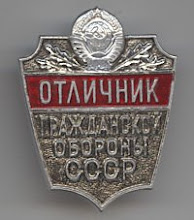I'm currently living in a building that was constructed in the 1950s to house members of the Soviet Academy of Sciences, and (presumably) because of this, it's right across the street from the Academy of Sciences bookstore. On my previous trips to Moscow I had always made a point to frequent this establishment, as it offers a very good selection of used items at reasonable prices. Last week I found an interesting book there--a 1975 analysis by the Soviet Academy of Sciences of the capitalist world's energy woes.
Titled Энергетический кризис в капиталистическом мире (The Energy Crisis in the Capitalist World), this 478-page volume offers fascinating insights into Soviet thinking on energy in the mid-1970s. Published in an edition of 5000 copies, this highly technical book was clearly intended mainly for specialists, rather than everyday readers.
On the whole, the authors of the book attribute the energy crisis to the "fundamental contradictions of capitalism," and in particular to a lack of planning. In their view the attendant inflation resulting from the energy crisis would deepen international capitalism's problems, encourage increasing divisions between the first world and the third world, and ultimately further the cause of socialism. Comecon, meanwhile, was utterly devoid of energy problems and indeed a model for the world to follow: "These countries supply the current and perspective fuel cycle from their own resources . . . act as exporters of energy resources on the world market, and work to provide assistance to many developing countries in accessing their energy resources, without demanding political, military, or other concessions. In effect the socialist energy sector is the most stable and balanced component part of the world's energy industry." (p. 474) While certainly rather hyperbolic, keep in mind the role that the energy export sector played in enabling the USSR to avoid confronting its many internal problems in the 1970s--at the very least, it was one of the best-run aspects of the socialist economies.
What's perhaps more interesting sections of the book is its analysis of the Ford Administration's then-current efforts to free America from oil imports by 1985--"Project Independence." Presciently, they predicted the failure of the United States to achieve these goals. Of the range of measures intended to solve America's energy problems technologically, ranging from synthfuels to renewable energy, the Soviets expected only one--nuclear energy--to meet expectations. At the same time, they expected all of these efforts to be realized on a larger scale than they actually were. For instance, follwing contemporary western estimates they forecast 280 GW of nuclear generation in service in the United States in 1985, when the actual figure was under 100.
The Soviet authors made the following comment about renewable energy that still rings true 34 years later:
Preliminary evaluations of many new trends in energy take on an extremely polemic character in the USA. On the one side, strong monopolies established in the fuel-energy complex attempt to minimize the potential technological and economic value of these resources. On the other side, small firms (most of the efforts for the development of new forms of energy come from this sector) loudly advertise their products, making maximum use of the current market situation. (p. 329)
One of the more surprising sections is that on energy efficiency efforts in the US, particularly with regards to combined heat and power (CHP) plants. In a statement that would make free-market "natural capitalist" and CHP guru Amory Lovins' head explode, they declare that:
American economists are attracted by Soviet experience in the development of centralized heating of cities with the assistance of CHP plants. But under the conditions of capitalism speculative land prices and laws regarding the laying of thermal mains discourage the development of this trend in energy. (p. 315)On the whole, an interesting historical artifact. The more things change...

2 comments:
Sounds like you are having fun.
Yes, indeed the energy export sector ran well in those days - it was one of the few sectors of the Soviet economy that was subject to market discipline!
But the Soviet analysts hit the nail on the head when they said that established energy concerns in the West would block serious competition by any means rather than lose market share.
Sounds like a fascinating experience you are having there
Post a Comment